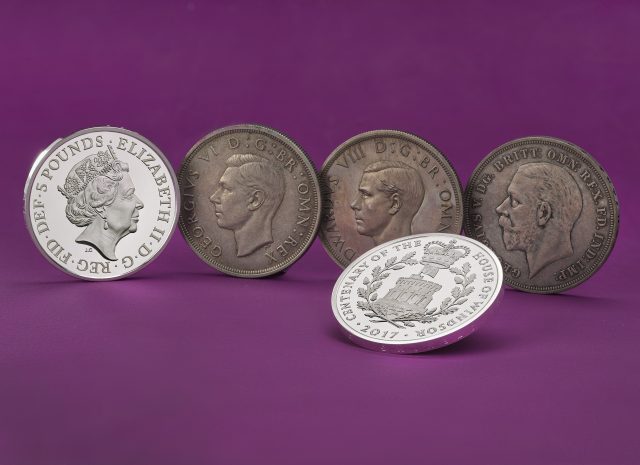‘Very good move’ for Royal Family to adopt Windsor surname
King George V dropped the German surname Saxe-Coburg-Gotha in 1917.

The Royal Family’s radical name change to Windsor a century ago was a “clever piece of branding” and a “very good move” in the long term, a historian has suggested.
The House of Windsor is 100 years old today, the anniversary of when the Queen’s grandfather King George V dropped the German surname Saxe-Coburg-Gotha in 1917 amid anti-German feeling during the First World War.

Professor Jane Ridley told the Press Association: “The effect of the First World War was to make people feel much more patriotic about being British, so having a monarch with a British surname was a clever piece of branding. There was another war coming.
“If in 1939 the royals had still had a German surname, and given the fact that many of the small German princes were rather friendly with Hitler, it would have been an extremely unfortunate situation, so it turned out in the long term to be a very good move.”
On July 17 1917, the king issued a royal proclamation changing the royals’ house and surname, declaring that they would “be styled and known as the House and Family of Windsor” and that they would “relinquish and discontinue the use of all German Titles and Dignities”.
The Royal Mint has marked the historic anniversary with a commemorative £5 coin which features Windsor Castle’s Round Tower.

George V’s decision followed concern in the press in the wake of the Russian revolution and the forced abdication of the Tsar Nicholas II that the King should not offer asylum to the Russian royals, and criticism that the UK was at war with Germany but had German royals on its throne.
In June 1917, the Germans intensively bombed the East End of London with a new plane called the “Gotha” and staged a daylight raid on a primary school which killed 18 children.
Prof Ridley, an author, and history professor at the University of Buckingham, said: “The coincidence of the Gotha bomber and the King’s surname being Saxe-Coburg-Gotha was obviously not very good publicity…They had already decided to change the name before the June bombing, but it certainly made it more urgent.”

Saxe-Coburg-Gotha became part of the royal family in 1840 with the marriage of Queen Victoria to Prince Albert.
Dynasties had changed throughout history such as the Stuarts and the Hanoverians but the decision to completely replace the name of those on the throne was a dramatic new move.
The royals were initially unsure of which alternate one to pick and the end result could have been very different.
“There was lot of debate. There were various suggestions. Should they call themselves Tudor-Stuart or call themselves Guelph, which was the Hanoverian name?” Prof Ridley said.
“But all were thought to be unsuitable and they got rather stuck until Lord Stamfordham (the King’s private secretary) had this brainwave and suggested Windsor.
“Windsor was incredibly English and the monarchy had been based at Windsor since the Middle Ages so it was a brilliant idea.”
Built in the 11th century, Windsor is the oldest and largest continually occupied castle in Europe.





